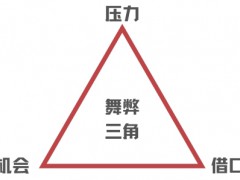據生物柴油網6月7日報道,國際航空運輸協會(IATA)6月6日宣布,預計到2028年,可再生燃料的總產量將達到至少182億加侖。可持續航空燃料(SAF)將依托新增的生物精煉廠和現有設施的擴建,在這一不斷增長的產量中占一部分。更為重要的是,預計產量會覆蓋北美、歐洲和亞太地區。
國際航空運輸協會總干事Willie Walsh表示:“預期的產量增長非常令人鼓舞。”“基于這一點,我們需要各國政府采取行動,確保SAF獲得公平的生產份額。這首先意味著,要采取生產激勵措施來支持航空業的能源轉型。這就需要政府繼續批準更多種類的SAF生產方法和原料。隨著這兩項措施的成功實施,我們可以相信,預計2028年生產水平將與我們最近所發布的2050年實現凈零碳排放路線圖保持一致。這一點至關重要,因為我們期冀SAF在2050年能夠占碳減排約62%的份額。”
支持這種樂觀前景的趨勢苗頭已經顯而易見。2022年,SAF產量增加了兩倍,達到約7925萬加侖,潛在SAF生產商的項目公告正在迅速增長。
國際航空運輸協會統計了在30個國家85多家生產商已宣布的130多個相關可再生燃料項目。這些項目中的每一個都公布了在其擴大可再生燃料產品范圍時包括SAF的意圖或承諾。
通常情況下,項目宣布和商業化日期之間有3到5年的滯后期。
這意味著,在2030年之前可再生燃料產能仍可能繼續增加。
國際航空運輸協會表示,如果可再生燃料產量按估計到2028年達到182億加侖,到2030年將達到264億加侖。哪怕只有30%產品是SAF,到2030年,SAF產量將接近80億加侖。
Walsh說:“從這些新的和擴大的設施中保障必要的SAF百分比供給是不穩定的。”“但隨著世界各國政府在國際民航組織上就到2050年實現凈零排放的長期目標達成一致,他們現在共同承擔航空脫碳的責任。這意味著要建立一個政策框架,確保航空業在SAF可再生能源生產中獲得必要的份額。”
根據國際航空運輸協會的說法,在目前的可持續性標準范圍內,要推進生產方式多樣化的理由顯而易見,因為以前SAF生產途徑較為單一。目前,預計未來五年內,85%的SAF產量將僅來自九種認證途徑中加氫處理的酯和脂肪酸(HEFA)這一方案,HEFA是一種依賴廢脂肪、油和油脂(FOG)原料等工業界公認為第二代原料的生產技術。
國際航空運輸協會確定了實現SAF多樣化的三個主要途徑:
1.擴大已經認證的SAF途徑,如自廢棄物合成(alcohol-to-jet)和費托合成(Fischer-Tropsch)。
2.加快正在研發的新SAF生產途徑的研發。
3.擴大原料和原料轉化技術。
令這些途徑加速到商業化水平將需要政府的政策引導。首先,SAF生產迫切需要統一的穩定政策支持,以此減少包括生產商、原料供應商和承購商在內的新市場進入者的行政、后勤和地理阻礙。
更根本的挑戰是,找到開發新技術和生產設施所需的資金。
國際航空運輸協會表示,各國政府應該通過這些投資,著眼于更廣泛的可持續發展前景。
SAF可由剩余的林業和農業殘留物、城市固體廢物、食物垃圾和濕垃圾(即第三代原料)生產。
從第三代原料中生產SAF可以為政府提供長期的投資回報。這些回報有可能為環境清理提供資金支持,支持發展中的經濟體,并同時實現能源轉型和能源安全。
國際航空運輸協會最近的一項調查顯示,公眾對SAF的支持率很高。
大約85%的旅行者同意政府應該激勵航空公司使用SAF。
Walsh說:“公眾見證了政府在向綠色能源發電過渡過程中所扮演的角色。他們現在期望在向SAF轉型中,政府也能做到這一點。七國集團領導人剛剛重申他們理解‘SAF對可持續航空至關重要’。現在他們必須采用有效的政策來兌現他們曾經的承諾。有許多久經考驗的有效工具可以促進SAF的生產,包括稅收抵免、補貼,甚至對新興技術和解決方案的直接投資等。航空公司希望購買SAF,市場需求已經等待多時。任何有意義激勵SAF生產的舉措,都將是前進進程中的一大步。”
林圣澤 編譯自 生物柴油網
原文如下:
IATA: SAF production set for growth but needs policy support to diversify sources
The International Air Transport Association announced June 6 its expectation for overall renewable fuel production to reach an estimated capacity of at least 18.2 billion gallons by 2028. Sustainable aviation fuel (SAF) will comprise a portion of this growing output through new biorefineries and the expansion of existing facilities. importantly, the expected production has a wide geographic footprint covering North America, Europe and Asia Pacific.
“The expected production increase is extremely encouraging,” said Willie Walsh, IATA’s director general. “Seeing this, we need governments to act to ensure that SAF gets its fair production share. That means, in the first instance, production incentives to support aviation’s energy transition. And we need continued approval for more diversification of methods and feedstocks available for SAF production. With these two measures successfully in place, we can be confident that the expected 2028 production levels will be realistically aligned with our recently published roadmaps to net-zero carbon emissions by 2050. That is important as we are counting on SAF to provide about 62 percent of the carbon mitigation needed in 2050.”
Trends supporting this optimistic outlook are already visible. In 2022, SAF production tripled to some 79.25 million gallons and project announcements for potential SAF producers are rapidly growing.
IATA counts over 130 relevant renewable fuel projects announced by more than 85 producers across 30 countries. Each of these projects has either announced the intent or commitment to produce SAF within their wider product slate of renewable fuels.
Typically, there is a three- to five-year lag between a project announcement and its commercialization date.
This implies that further renewable fuel capacity out until 2030 could still be announced over the following years.
IATA stated that if renewable fuel production reaches 18.2 billion gallons by 2028 as estimated, the trajectory to 26.4 billion gallons by 2030 would be on track. If just 30 percent of that produced SAF, the industry could achieve nearly 8 billion gallons of SAF production by 2030.
“Achieving the necessary SAF-percentage output from these new and expanding facilities is not a given,” Walsh said. “But with governments the world over agreeing at ICAO to a long-term aspirational goal (LTAG) of net zero by 2050, they now share accountability for aviation’s decarbonization. That means establishing a policy framework to ensure that aviation gets the needed share of renewable energy production in SAF.”
The case for diversification, within current sustainability criteria, is clear, according to IATA. At present, it is expected that 85 percent of future SAF volume over the next five years will be derived from just one of nine certified pathways, being hydrotreated esters and fatty acids (HEFA), which is dependent on limited availability of feedstock such as waste fat, oil and grease (FOG) feedstocks recognized by industry as second-generation feedstock.
IATA identifies three main avenues to achieve SAF diversification:
Scale already certified SAF pathways such as alcohol-to-jet (ATJ) and Fischer-Tropsch
Accelerated R&D for SAF production pathways that are currently in development
Scale up of feedstock and feedstock-conversion technology
Accelerating these avenues to commercialized levels will require policy leadership from governments. To start, there is an impending need for the harmonization of core SAF policies as a means of reducing administrative, logistical and geographic barriers to entry for new market entrants, including producers, feedstock providers and offtakers.
More fundamentally, the challenge is finding the capital needed to fund the development of new technology and production facilities.
Governments must look at the broader sustainability picture with these investments, according to IATA.
SAF can be produced from surplus forestry and agricultural residues, municipal solid waste, food waste and wet wastes (third-generation feedstocks).
Producing SAF from these can create long-term return on investment opportunities for governments, with the potential of financing the clean-up of the environment, supporting developing economies and delivering a future-proofed intersection of energy transition and energy security.
A recent IATA survey revealed significant public support for SAF.
Some 85 percent of travelers agreed that governments should provide incentives for airlines to use SAF.
“People have experienced governments’ role in the transition to green energy for electricity,” Walsh said. “They now expect it for SAF. The G7 leaders are among the latest to reiterate their understanding that SAF is critical for sustainable aviation. Now they must support their declarations with effective policies. To promote SAF production, there are many tried and tested tools including tax credits, grants or even direct investments in emerging technologies and solutions. The market is there. Airlines want to purchase SAF. Anything to meaningfully incentivize SAF production will be a step forward.”
免責聲明:本網轉載自其它媒體的文章及圖片,目的在于弘揚石化精神,傳遞更多石化信息,宣傳國家石化產業政策,展示國家石化產業形象,參與國際石化產業輿論競爭,提高國際石化產業話語權,并不代表本網贊同其觀點和對其真實性負責,在此我們謹向原作者和原媒體致以崇高敬意。如果您認為本站文章及圖片侵犯了您的版權,請與我們聯系,我們將第一時間刪除。







